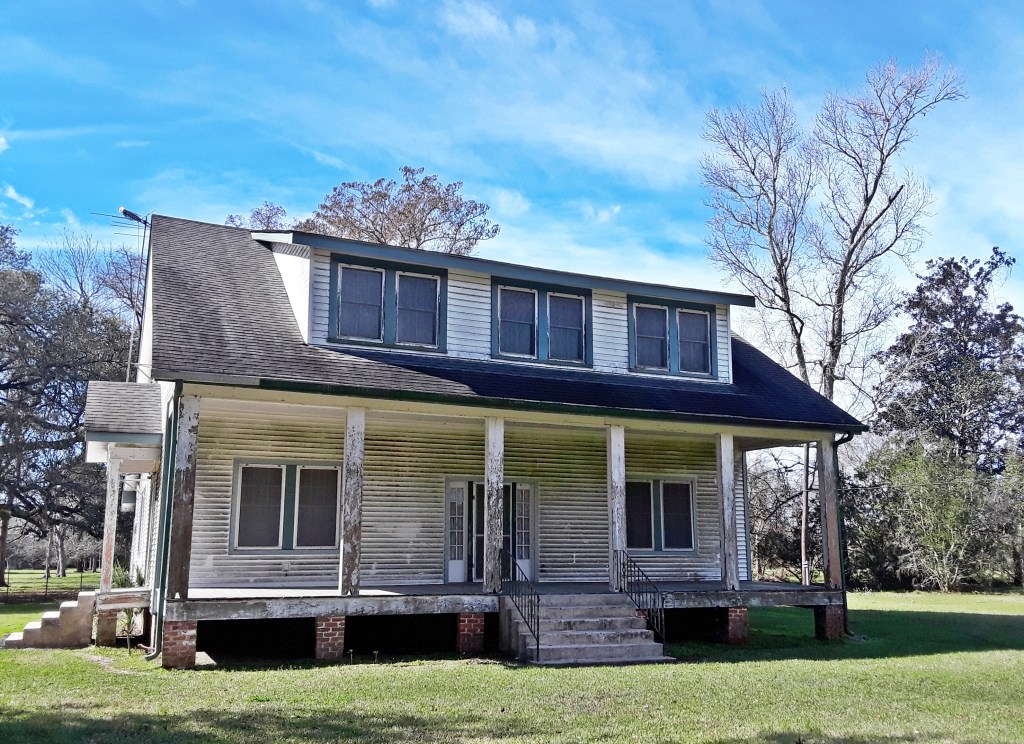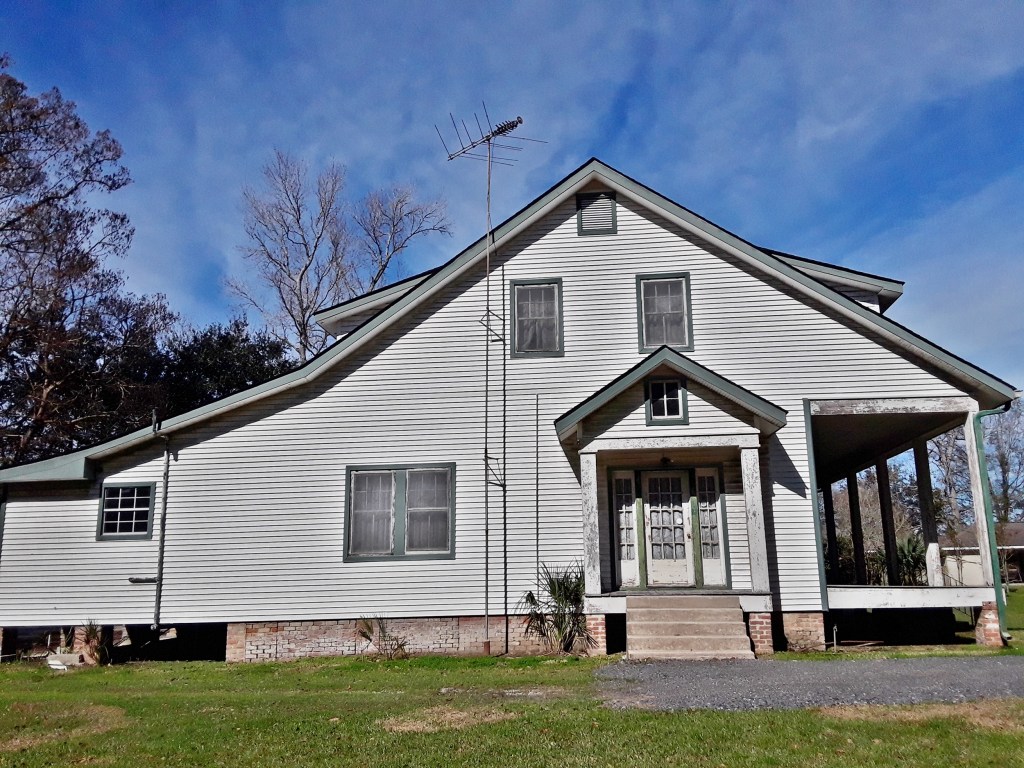Home » Posts tagged 'Hahnville'
Tag Archives: Hahnville
How to Cook Authentic South Louisiana Rice

New Orleans, my birthplace, and all South Louisiana are justly known for unique and exquisite cuisine. It includes French Creole and Cajun styles that have gained widespread popularity. Cooking is serious business among Louisiana families, and we relish fine dining with each course accompanied by wine pairings. While all three daily meals have special dishes, dinner is most important and often formal with nice linens and tableware. In my family, everyone had to be seated at the table before we began dinner, of course initiated by saying grace. We had to ask to be excused from the table before leaving at dinner’s end.
My mother was the primary chef, although we all made contributions depending on the menu. My sister and I learned cooking from Mother, who was quite accomplished in regional cuisine. My father and brother specialized in grilling and broiling meat and game, which they hunted. Everyone cooked fish and crustaceans, frequently used in our cuisine. Naturally we made all the famous Creole and Cajun dishes: gumbo, étouffée, Creole sauces, grits, rice, and numerous vegetables almost always cooked with ham or bacon. But my family rarely had desserts. My mother never included them, perhaps because she hadn’t learned to bake or wished to avoid additional calories.
According to South Louisiana people, there is a particular way to cook rice. It should be light and fluffy, each grain standing apart from its fellows. If rice was sticky or clumpy, the cook had failed. Rice was an accompaniment to gravy, gumbo, red beans, Creole sauces and étouffée, and the foundation for jambalaya and dirty rice (made with diced giblets). Rice as a base for stir-fried vegetables or pilaf was not part of my family’s meals, although these were not unknown locally. There are variations on “perfectly cooked rice” but I’ll give my mother’s version first.

Steamed Rice According to Dorothy Martin
Bring a pot full of water to a boil. Add 1-2 tsp salt depending on how many servings of rice. Rinse 1-2 cups long grain white rice under running water until it drains clear. Add to boiling water and cook 15 minutes. Drain rice in colander, then place colander over new pot of boiling water. Cover colander and steam another 5-10 minutes until rice is fluffy and each grain is separate. Now you have perfect rice.
That may seem like a lot of effort for rice, which many people just put into a pot in 1-to-2 ratio with salted water, bring to a boil, lower heat, cover and cook 20 minutes. But I guarantee you, the results will be different. Some Louisiana cooks use variations of Mother’s approach, boiling rinsed rice in the pot until the water is absorbed, then turning off the heat, covering pot and steaming until rice is done. Proportions are 1 cup rice to 1 1/3 cups water.
In the interests of “full disclosure,” I admit to using the easier boil in a pot method now. But I do miss the special texture of my mother’s steamed rice.

What to Serve With Rice
Everything from roast beef and gravy, duck or seafood gumbo, red beans with Andouille sausage, and shrimp or crawfish Creole goes well with your perfect rice. Today I’m featuring shrimp étouffée to serve over rice. Crawfish étouffée is the classic dish, but getting crawfish is not easy outside of Louisiana. The dish has a curious history. Originally it was known as crawfish courtbouillon, a rich stew of seasoned “Holy Trinity” vegetables—onions, bell pepper, and celery. Crawfish tails and fat were added after the stew thickened. In late 1940s, the owner of a Lafayette restaurant was preparing the dish at home, while a frequent customer watched. In French the customer asked what was being prepared, and was told “smothered” crawfish—étouffée is French for smothered. Later at the restaurant the customer came with friends and ordered “crawfish étouffée” coining the name by which this dish is now known.

Shrimp Étouffée
Modified from Talk About Good!
1 lb. raw peeled, deveined shrimp
¼ lb. butter (or mix ½ butter – ½ vegetable oil)
3-4 tbsp. flour
1 cup each chopped onions, celery, and green bell peppers
Salt, pepper, chopped parsley, chopped green onion tops
Melt butter/oil in deep skillet, add onions, celery, and bell peppers. Sauté until softened, sprinkle flour over and mix well, cook to form light colored roux (gumbo or gravy base). Add salt, pepper, and parsley to taste. Add 1 cup water, stir well, cover and simmer ½ to ¾ hour (add more water if needed). Add shrimp and cook 4-5 minutes, until shrimp turn pink. Add more water if necessary, correct seasonings. Garnish with more chopped parsley and green onion tops. Serve over perfect rice.
If you add chopped tomatoes or tomato sauce to this recipe, you turn it into Shrimp Creole. That is also delicious, just a different flavor. These recipes and many more authentic Louisiana dishes are in my go-to cookbook, Talk About Good! Le Livre de la Cuisine de Lafayette. (Junior League of Lafayette, LA, 1969). I wore out my original cookbook after 50+ years of use. Fortunately, it’s in the 33rd printing, available on Amazon. I got a new copy two years ago. Maybe next time I’ll tell how to make roux. Bon appetite!

Three Women on a Porch: Story Behind the Picture
When I became the keeper of my family genealogy site, there already was a large photo gallery. Browsing through, I found this photo of three women on the porch of a French Creole cottage-style house. There was no description, but I knew the house was typical of South Louisiana along the Mississippi River, during the late 19th and early 20th centuries. The steps and porch looked vaguely familiar, as though long-ago memories were being tickled. From the women’s hair styles and clothes, I placed the photo around 1910.

I found the picture striking. The older women in the center had a square face and stern expression. Her eyes and brows resembled others I knew in the Martin family. The young woman at left in the photo had a graceful demeanor and lovely profile, studiously reading her book. At the photo’s right, a sprightly young woman with round face and faint smile held a dog in her lap. She was the only one looking at the camera, suggesting she was forthright and engaging. I was so taken by the picture that I chose it for the cover of my family history book, Upriver Families: Acadian Roots and Creole Heritage, co-authored with daughter Katherine Bonnabel and cousin Corinne Martin.
By then I had discovered who the women were. I sent the photo to several family members, and although there was some disagreement, the consensus was that they were Celeste Triche Martin in center, and her two daughters Irma Martin at left and Marie “Keet” Martin at right. Apparently, the photo was in a collection given to cousin Corinne by our aunt Minerva Martin, the family historian before passing that job on. Corinne remembered Aunt Min telling her the matriarch in the center was Celeste Triche Martin, our great-grandmother and our grandfather J.B. Martin Jr.’s mother. J.B. (Jean Baptiste) was brother to Irma and Marie “Keet,” as well as six other siblings. The source of the photo is unknown.
J.B. Martin Sr. was our great-grandfather and husband of Celeste. He was clerk of court for St. Charles Parish and worked in Hahnville. Celeste’s father, J.C. Triche Sr., was editor of the St. Charles Herald and quite influential. In 1883, the sale of property to Celeste Triche Martin was recorded, it was once part of Colonel Richard Taylor’s Fashion Plantation. He was the son of U.S. President Zachary Taylor. After the Civil War, the plantation was sliced into several lots and sold. The Martin family situated a large two-story house built in typical French Creole style there, set well back from the road with a long driveway. The property was 162.66 acres, a long narrow rectangle extending west from the Mississippi River to a wooded, swampy area and the railroad tracks. The river was the main transportation artery and properties commonly came with river access. River Road was constructed in early 1900s but was rough and muddy much of the year.

The driveway led from River Road past the house to outbuildings including barn, garage, and storage shed. A porch bounded by railings ran the width in front, and plain square columns supported the roof. Central stairs on which the two daughters are sitting led up to the elevated first floor, and the mother is on the porch. Creole cottages typically had living and dining rooms on the first floor, and bedrooms on the second. Behind was an extension containing the kitchen, bathrooms, pantry, and storage. Two chimneys rose above the roof venting fireplaces. Later a three-window dormer was added to brighten the upstairs bedrooms.
Celeste’s husband died unexpectedly in 1897 at age 50, still holding office as parish clerk. Our grandfather J.B. Martin Jr. was 16 years old. Celeste managed the household and raised the six young children, assisted by her large extended family. She lived to see the new century and the success of two children: J.B. became superintendent of schools for St. Charles Parish for 31 years, and Marie “Keet” became a noted teacher, band director, and principal in the public school system for 41 years.
Irma married Leon Charles Vial I in 1902. His family owned adjacent property that was part of Fashion Plantation. He was a leading politician and sheriff for 22 years, initiating the “Vial Era” in parish politics. Holding public office on 10 different occasions, he never lost an election. Sheriff Vial’s sister Leonide Mary Vial (our grandmother) married Irma’s brother J.B. Martin Jr. in 1903. Called a “double marriage” in local parlance, this intertwined the Martin and Vial families in multiple ways. The couples were double in-laws and their children double first cousins.
Irma died in 1913 and Leon remarried the widow Marie Keller, whose family owned Home Place, a nearby plantation. Celeste died in 1924 at age 72. The house on River Road in Hahnville became home of Marie “Keet,” the youngest daughter, and her husband Laurent J. Labry. They adopted two children, grew orchids in a hothouse, and after Marie died in 1981, the house was sold. It was neglected for years, until a Vial family member bought it in 2020. Renovation was begun but put on hold by Hurricane Ida. Now boarded up with stabilized foundation, the old Creole cottage awaits renewal.






